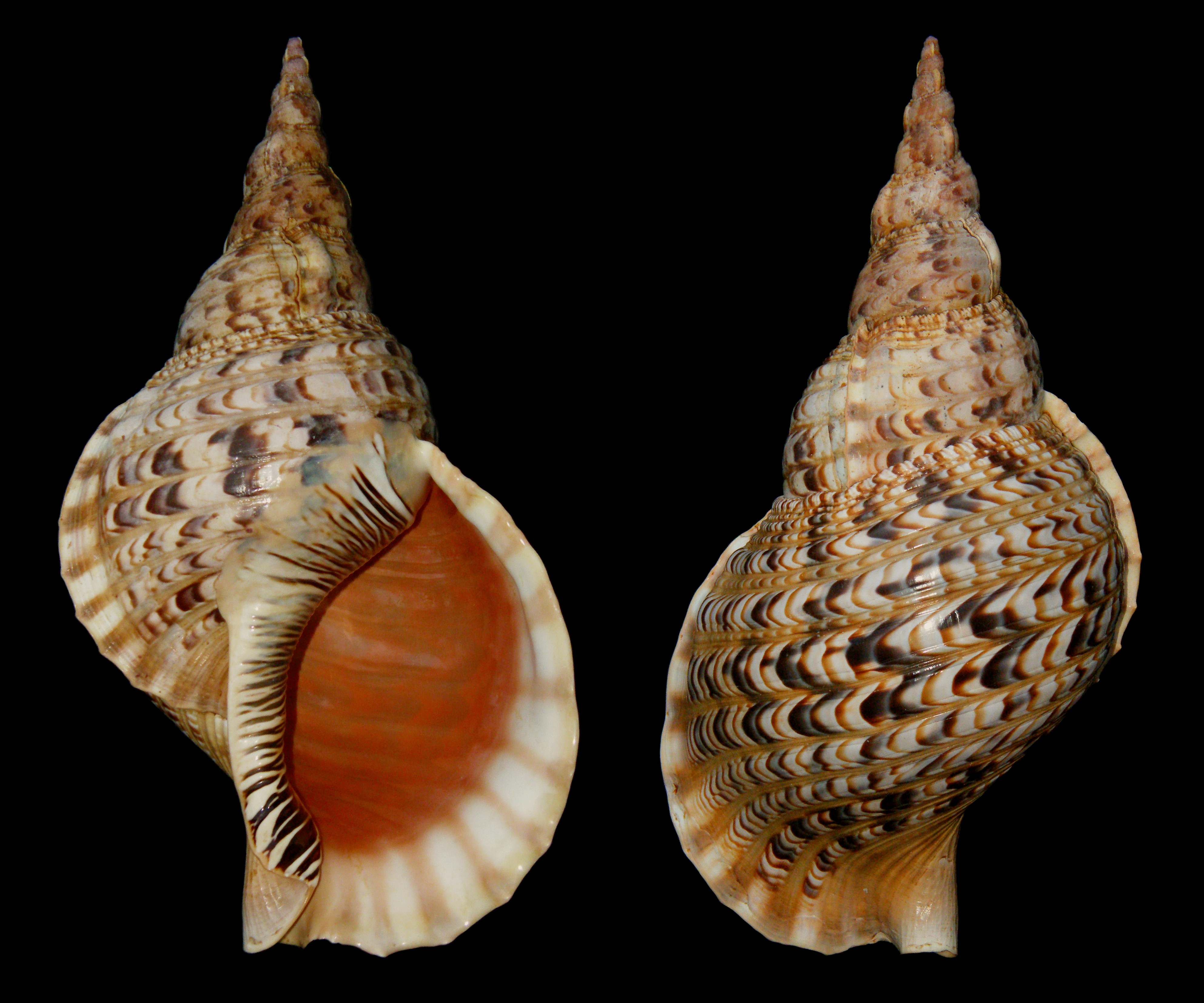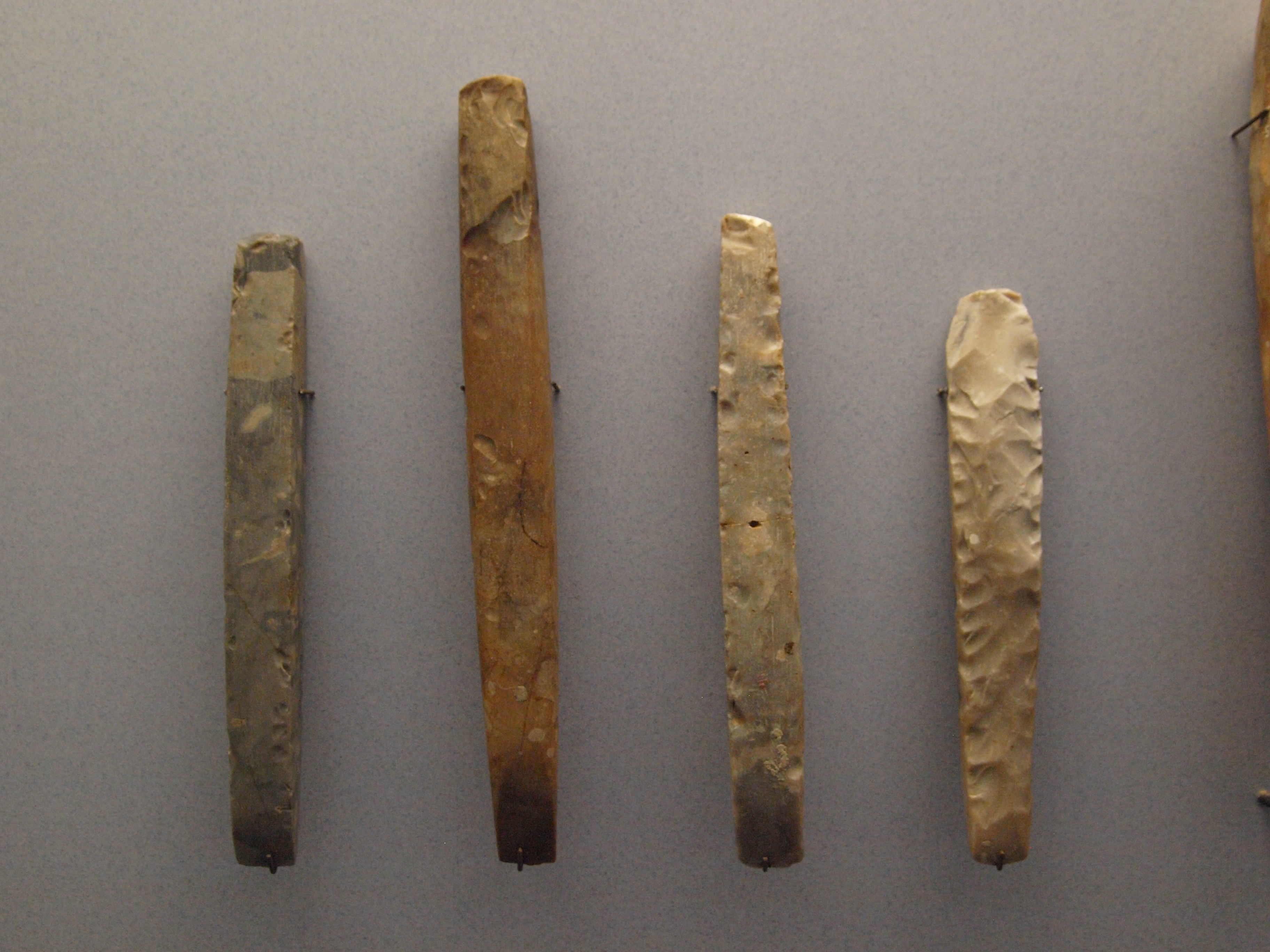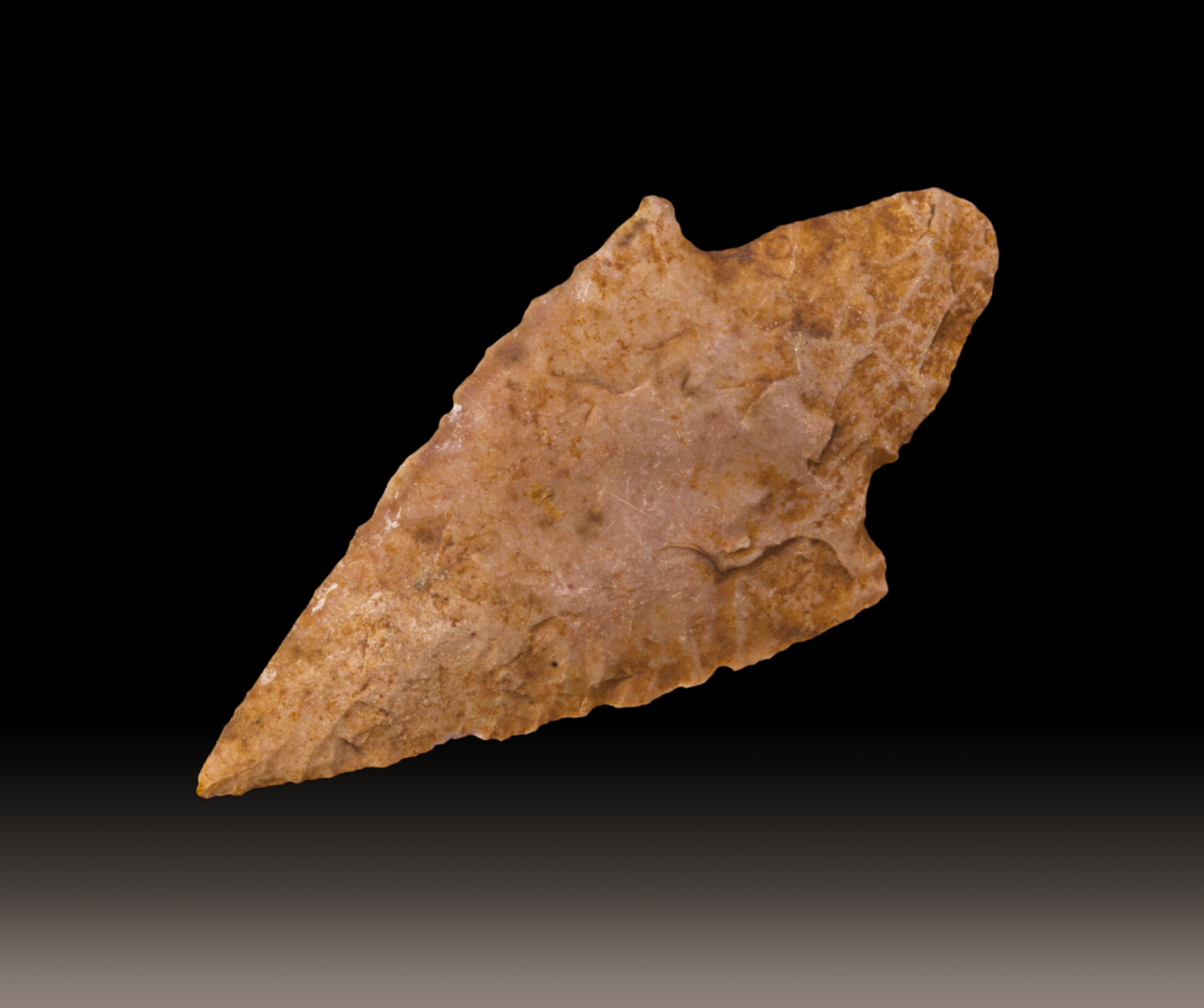|
Shellmidden Period
The Shellmidden or Shellmound Period (Japanese: 貝塚時代, ''Kaizuka jidai'') is one of the periods of the prehistory of the Okinawa and Amami Islands. It is defined as the period of the prehistory in the Amami and Okinawa Islands with pottery. It lasts from 8000 BCE to the 11th or 12th centuries CE. The culture that develops during this period is called the Shellmidden Culture (Japanese: 貝塚文化, ''Kaizuka bunka''). It is divided into Early and Late Shellmidden Period, the difference residing in a shift in the settlement location and the development of trade with the neighbouring cultures, first Japan, and then China and Korea. Economy is mainly based on gathering, fishing and hunting, the principal resources exploited being acorns, fishes and shellfishes. Settlements are limited in size, with the apparition of perennial villages by the end of the Early Shellmidden Period. The material culture is dominated by an important pottery production and very characteristic bon ... [...More Info...] [...Related Items...] OR: [Wikipedia] [Google] [Baidu] |
Pit-house
A pit-house (or pit house, pithouse) is a house built in the ground and used for shelter. Besides providing shelter from the most extreme of weather conditions, this type of earth shelter may also be used to store food (just like a pantry, a larder, or a root cellar) and for cultural activities like the telling of stories, dancing, singing and celebrations. General dictionaries also describe a pit-house as a dugout, and it has similarities to a half-dugout. In archaeology, a pit-house is frequently called a sunken-featured building and occasionally (grub-) hut or grubhouse, after the German name ''Grubenhaus''. They are found in numerous cultures around the world, including the people of the Southwestern United States, the ancestral Pueblo, the ancient Fremont and Mogollon cultures, the Cherokee, the Inuit, the people of the Plateau, and archaic residents of Wyoming (Smith 2003) in North America; Archaic residents of the Lake Titicaca Basin (Craig 2005) in South America; ... [...More Info...] [...Related Items...] OR: [Wikipedia] [Google] [Baidu] |
Charonia Tritonis
''Charonia tritonis'', common name the Triton's trumpet, the giant triton or is a species of very large sea snail, a marine gastropod mollusc in the family Charoniidae, the tritons. Reaching up to two feet (or 60 cm) in shell length this is one of the biggest mollusks in the coral reef. Distribution This species is found throughout the Indo-Pacific Oceans, Red Sea included. Description Feeding habits ''C. tritonis'' is one of the few animals to feed on the crown-of-thorns starfish, '' Acanthaster planci''. Occasional plagues of this large and destructive starfish have killed extensive areas of coral on the Great Barrier Reef of Australia and the western Pacific reefs. The triton has been described as tearing the starfish to pieces with its file-like radula. Human use The shell is well known as a decorative object, and is sometimes modified for use as a trumpet (such as the Japanese '' horagai'', the Maldivian '' sangu'', the Hawaiian ''pū (hoʻokani)'' or the ... [...More Info...] [...Related Items...] OR: [Wikipedia] [Google] [Baidu] |
Turbo Marmoratus
''Turbo marmoratus'', known as the green turban, the marbled turban or great green turban, is a large species of marine gastropod with a thick calcareous operculum in the family Turbinidae, the turban snails.WoRMS (2012). ''Turbo marmoratus'' Linnaeus, 1758. Accessed through: World Register of Marine Species at http://www.marinespecies.org/aphia.php?p=taxdetails&id=216369 on 2012-10-01 The shells of these large sea snails have a very thick layer of nacre; this species has been commercially fished as a source of mother of pearl. Distribution These large snails live in tropical reefs in the Indian Ocean (off Tanzania, Madagascar, Aldabra and the Mascarene Basin) and tropical western Pacific oceans; also off Queensland, Australia. They are nocturnal and feed on algae. Specimens were found among oysters in Samish Bay, Washington in 1924, though it does not appear to have become established there. It was also deliberately introduced to Samoa and Tonga in the 1990's - but it is ... [...More Info...] [...Related Items...] OR: [Wikipedia] [Google] [Baidu] |
Shark Tooth
Sharks continually shed their teeth; some Carcharhiniformes shed approximately 35,000 teeth in a lifetime, replacing those that fall out. There are four basic types of shark teeth: dense flattened, needle-like, pointed lower with triangular upper, and non-functional. The type of tooth that a shark has depends on its diet and feeding habits. Sharks are a great model organism to study because they continually produce highly mineralized tissues. Sharks continually shed their teeth and replace them through a tooth replacement system. Through this system, sharks replace their teeth relatively quickly with replacement teeth that are ready to rotate because their teeth often get damaged while catching prey. They will replace teeth that are broken and young sharks can even replace their teeth weekly. Although sharks constantly shed their teeth, factors such as water temperature affect the turnover rate. While warmer water temperatures produced faster rates, cold water temperatures slow ... [...More Info...] [...Related Items...] OR: [Wikipedia] [Google] [Baidu] |
Dugong
The dugong (; ''Dugong dugon'') is a marine mammal. It is one of four living species of the order Sirenia, which also includes three species of manatees. It is the only living representative of the once-diverse family Dugongidae; its closest modern relative, Steller's sea cow (''Hydrodamalis gigas''), was hunted to extinction in the 18th century. The dugong is the only sirenian in its range, which spans the waters of some 40 countries and territories throughout the Indo-West Pacific. The dugong is largely dependent on seagrass communities for subsistence and is thus restricted to the coastal habitats that support seagrass meadows, with the largest dugong concentrations typically occurring in wide, shallow, protected areas such as bays, mangrove channels, the waters of large inshore islands, and inter-reefal waters. The northern waters of Australia between Shark Bay and Moreton Bay are believed to be the dugong's contemporary stronghold. Like all modern sirenians, the d ... [...More Info...] [...Related Items...] OR: [Wikipedia] [Google] [Baidu] |
Whale
Whales are a widely distributed and diverse group of fully Aquatic animal, aquatic placental mammal, placental marine mammals. As an informal and Colloquialism, colloquial grouping, they correspond to large members of the infraorder Cetacea, i.e. all cetaceans apart from dolphins and porpoises. Dolphins and porpoises may be considered whales from a formal, Cladistics, cladistic perspective. Whales, dolphins and porpoises belong to the order Cetartiodactyla, which consists of even-toed ungulates. Their closest non-cetacean living relatives are the hippopotamuses, from which they and other cetaceans diverged about 54 million years ago. The two parvorders of whales, baleen whales (Mysticeti) and toothed whales (Odontoceti), are thought to have had their Most recent common ancestor, last common ancestor around 34 million years ago. Mysticetes include four Neontology, extant (living) Family (biology), families: Balaenopteridae (the rorquals), Balaenidae (right whales), Cetotheriid ... [...More Info...] [...Related Items...] OR: [Wikipedia] [Google] [Baidu] |
Drill
A drill is a tool used for making round holes or driving fasteners. It is fitted with a drill bit for making holes, or a screwdriver bit for securing fasteners. Historically, they were powered by hand, and later mains power, but cordless battery-powered drills are proliferating due to increased efficiency and ease of use. Drills are commonly used in woodworking, metalworking, construction, machine tool fabrication, and utility projects. Specially designed versions are made for surgery, dentistry, miniatures, and other applications. History Around 35,000 BC, ''Homo sapiens'' discovered the benefits of the application of rotary tools. This would have rudimentarily consisted of a pointed rock being spun between the hands to bore a hole through another material. This led to the hand drill, a smooth stick, that was sometimes attached to flint point, and was rubbed between the palms. This was used by many ancient civilizations around the world including the Mayans. The ear ... [...More Info...] [...Related Items...] OR: [Wikipedia] [Google] [Baidu] |
Chisel
A chisel is a hand tool with a characteristic Wedge, wedge-shaped cutting edge on the end of its blade. A chisel is useful for carving or cutting a hard material such as woodworking, wood, lapidary, stone, or metalworking, metal. Using a chisel involves forcing the blade into some material to cut it. The driving force may be applied by pushing by hand, or by using a mallet or hammer. In industrial use, a hydraulic ram or falling weight ('trip hammer') may be used to drive a chisel into the material. A Chisel#Gouge, gouge is a type of chisel that serves to carve small pieces from the material; particularly in woodworking, woodturning and sculpture. Woodworking Woodworking chisels range from small hand tools for tiny details, to large chisels used to remove big sections of wood, in 'roughing out' the shape of a pattern or design. Typically, in Wood carving, woodcarving, one starts with a larger tool, and gradually progresses to smaller tools to finish the detail. One of t ... [...More Info...] [...Related Items...] OR: [Wikipedia] [Google] [Baidu] |
Arrowhead
An arrowhead or point is the usually sharpened and hardened tip of an arrow, which contributes a majority of the projectile mass and is responsible for impacting and penetrating a target, or sometimes for special purposes such as signaling. The earliest arrowheads were made of stone and of organic materials; as human civilizations progressed, other alloy materials were used. Arrowheads are important archaeological artifacts; they are a subclass of projectile points. Modern enthusiasts still "produce over one million brand-new spear and arrow points per year". A craftsman who manufactures arrowheads is called an arrowsmith. History In the Stone Age, people used sharpened bone, flintknapped stones, flakes, and chips and bits of rock as weapons and tools. Such items remained in use throughout human civilization, with new materials used as time passed. As archaeological artifacts such objects are classed as projectile points, without specifying whether they were ... [...More Info...] [...Related Items...] OR: [Wikipedia] [Google] [Baidu] |
Grinding Slab
250px, Stone slab in east-central California used to grind acorns In archaeology, a grinding slab is a ground stone artifact generally used to grind plant materials into usable size, though some slabs were used to shape other ground stone artifacts. Some grinding stones are portable; others are not and, in fact, may be part of a stone outcropping. Grinding slabs used for plant processing typically acted as a coarse surface against which plant materials were ground using a portable hand stone, or mano ("hand" in Spanish). Variant grinding slabs are referred to as metates or querns, and have a ground-out bowl. Like all ground stone artifacts, grinding slabs are made of large-grained materials such as granite, basalt, or similar tool stone In archaeology, a tool stone is a type of stone that is used to manufacture stone tools, or tools that use stone as raw material. Generally speaking, tools that require a sharp edge are made using cryptocrystalline materials that frac ... [...More Info...] [...Related Items...] OR: [Wikipedia] [Google] [Baidu] |
Knapping
Knapping is the shaping of flint, chert, obsidian, or other conchoidal fracturing stone through the process of lithic reduction to manufacture stone tools, strikers for flintlock firearms, or to produce flat-faced stones for building or facing walls, and flushwork decoration. The original Germanic term ''knopp'' meant to strike, shape, or work, so it could theoretically have referred equally well to making statues or dice. Modern usage is more specific, referring almost exclusively to the free hand percussion process pictured. It is distinguished from the more general verb "chip" (to break up into small pieces, or unintentionally break off a piece of something) and is different from "carve" (removing only part of a face), and "cleave" (breaking along a natural plane). Method Flintknapping or knapping is done in a variety of ways depending on the purpose of the final product. For stone tools and flintlock strikers, chert is worked using a fabricator such as a hammerstone to ... [...More Info...] [...Related Items...] OR: [Wikipedia] [Google] [Baidu] |






